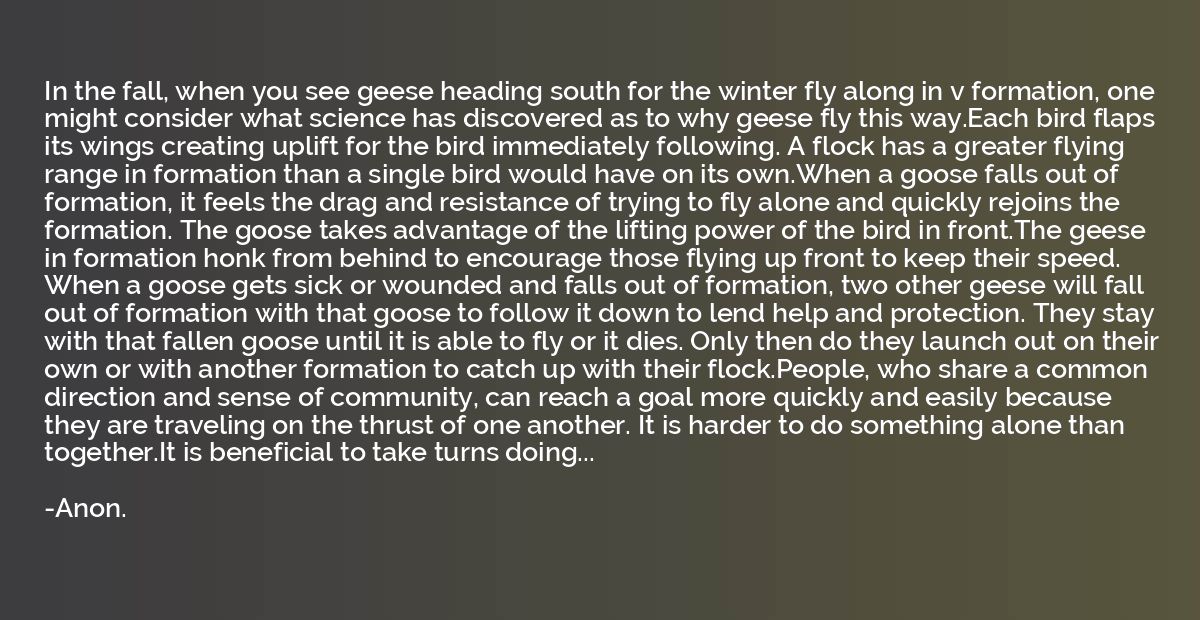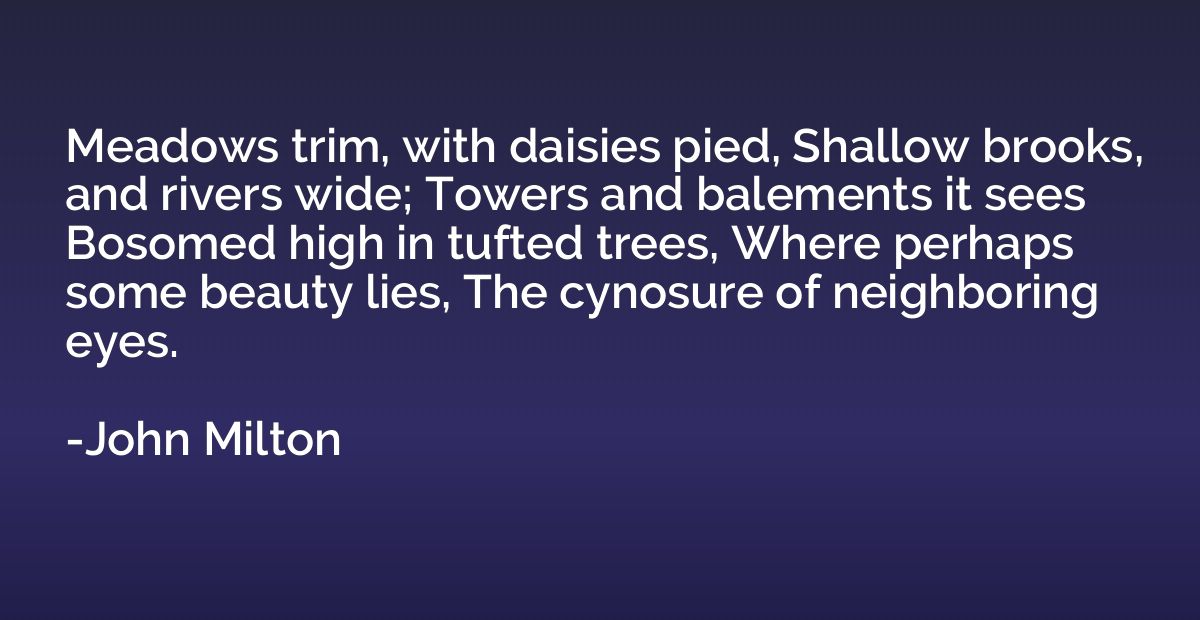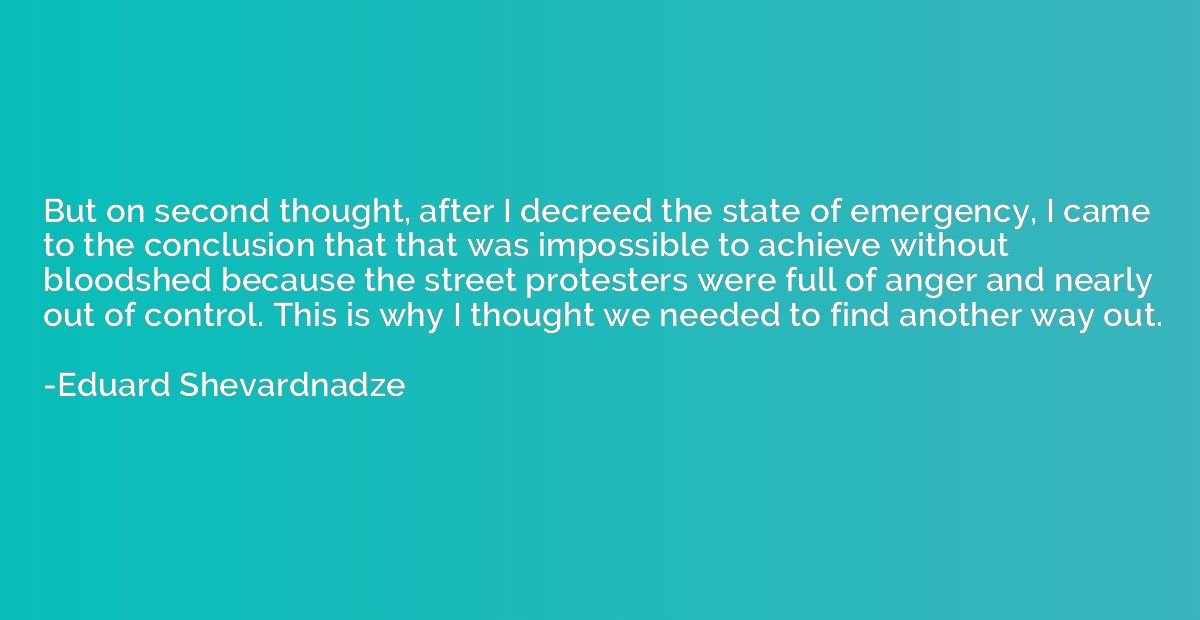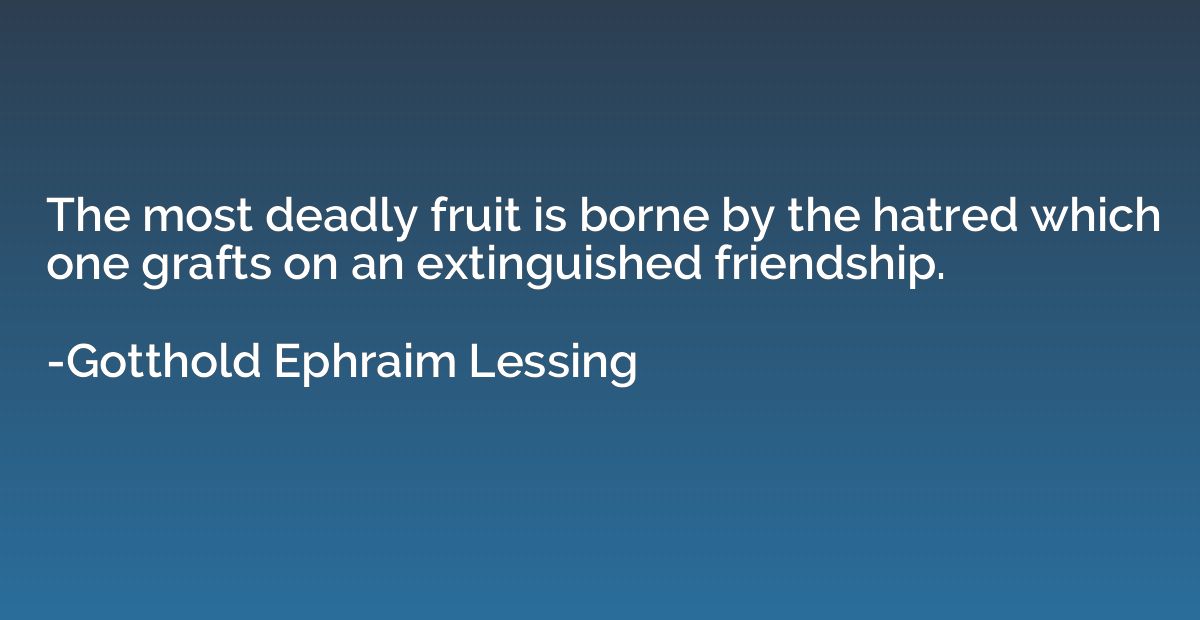Quote by Anon.
In the fall, when you see geese heading south for the winter fly along in v formation, one might consider what science has discovered as to why geese fly this way.Each bird flaps its wings creating uplift for the bird immediately following. A flock has a greater flying range in formation than a single bird would have on its own.When a goose falls out of formation, it feels the drag and resistance of trying to fly alone and quickly rejoins the formation. The goose takes advantage of the lifting power of the bird in front.The geese in formation honk from behind to encourage those flying up front to keep their speed. When a goose gets sick or wounded and falls out of formation, two other geese will fall out of formation with that goose to follow it down to lend help and protection. They stay with that fallen goose until it is able to fly or it dies. Only then do they launch out on their own or with another formation to catch up with their flock.People, who share a common direction and sense of community, can reach a goal more quickly and easily because they are traveling on the thrust of one another. It is harder to do something alone than together.It is beneficial to take turns doing demanding work. By sharing leadership and depending upon others in a group, there is a chance to lead and an opportunity to rest.

Summary
This quote explores the concept of teamwork and community by drawing a parallel between the flight pattern of geese and human social dynamics. Geese fly in a V formation because each bird creates uplift for the one behind it, allowing the flock to have greater flying range. If a goose falls out of formation, it quickly realizes the difficulty and expense of flying alone and rejoins the group. Geese also support each other by honking from behind to encourage those in front and offering help and protection to ill or wounded geese. Similarly, humans can achieve goals more easily by working together, taking turns in leadership, and relying on one another's strengths, fostering a sense of community and shared direction.
Topics
Teamwork
By Anon.














